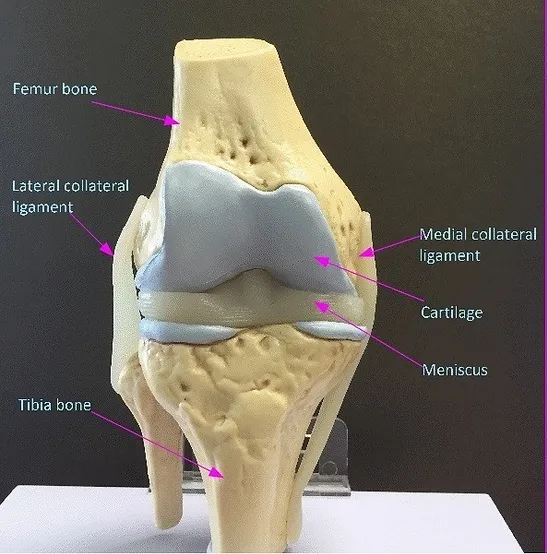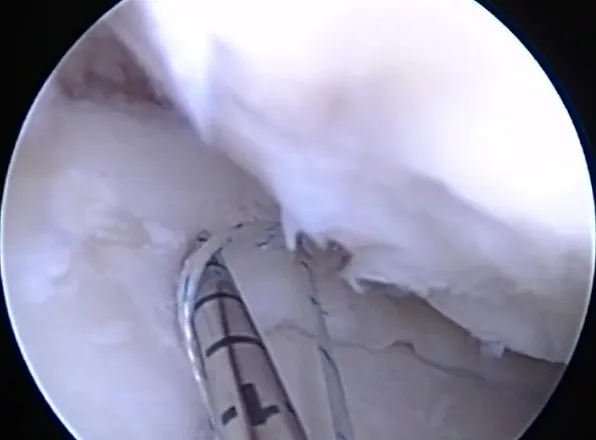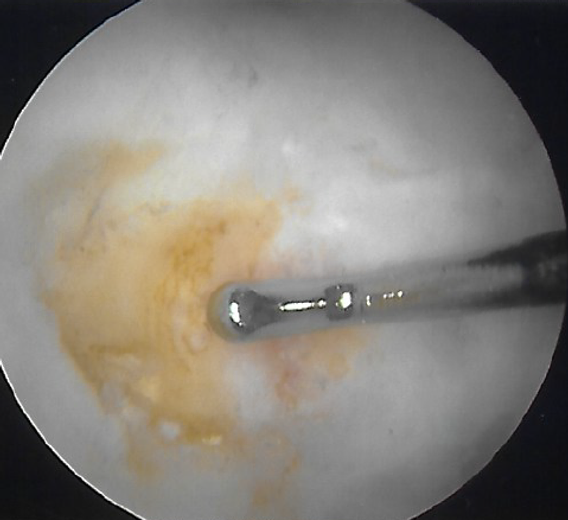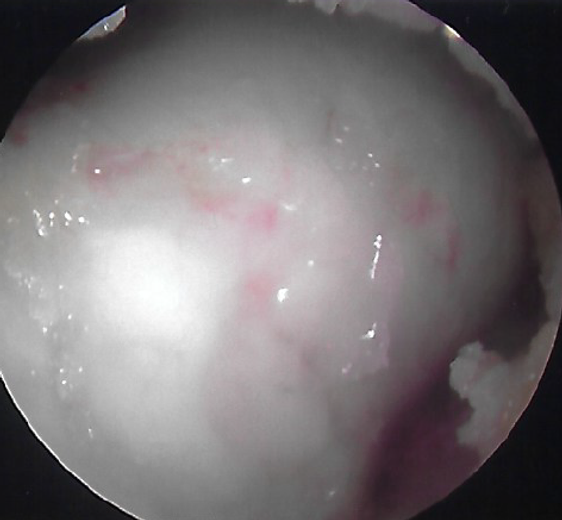Knee Cartilage/Meniscus Tear Injury

Knee Cartilage/Meniscus Repair using Scope Surgery
Knee pain is one of the most common joint pains to affect people at all ages, and can significantly impact one’s mobility and quality of life. This is where our knee specialists can help by accurately assessing your condition, followed by exploring the options for treatments, from conservative options to minimally invasive knee cartilage surgery, tailored to your specific needs. The goal is to help you address these conditions, regain pain-free movement, and restore Quality of Life.
Whether you’re an athlete who has sustained a sports injury or someone experiencing age-related wear and tear symptoms, our knee specialists have the expertise to effectively address your knee cartilage damage and get you back on your feet.
Overview of Knee Cartilage and Meniscus Functions
Cartilage is the smooth, protective layer covering the ends of bones in a joint, allowing for smooth movement and shock absorption. Think of it as a “soft bone” that cushions the knee joint. Maintaining healthy cartilage is vital for long-term joint health. However, injuries or wear and tear can lead to knee cartilage damage, potentially progressing to osteoarthritis.
The meniscus is a C-shaped, rubbery disc that acts as a shock absorber and stabiliser within the knee joint. It cushions the joint, distributes weight evenly, and protects the cartilage. Imagine it as your knee’s “suspension system.” Damage to the meniscus can disrupt knee function and increase the risk of knee cartilage injuries and Osteoarthritis.
Together, the cartilage and meniscus are essential for healthy knee function. They work in tandem to absorb shock, facilitate smooth movement, and protect the joint from excessive wear and tear.
How is Knee Cartilage/Meniscus Damaged?
Understanding how knee cartilage and meniscus injuries occur is helpful for prevention and seeking timely treatment. These vital structures within your knee joint can be damaged through various mechanisms:
High-impact injuries:
Sudden forceful impacts, such as those experienced during sports like football or basketball, falls, or accidents, can cause acute knee cartilage damage or meniscus tears. These injuries often involve twisting or direct blows to the knee.
Gradual wear and tear:
Over time, the cartilage and meniscus can gradually wear down due to ageing, repetitive stress, and overuse. This is particularly common in individuals who engage in repetitive activities or have occupations that place significant strain on their knees.
Associated conditions:
Underlying conditions like osteoarthritis can weaken the cartilage and make it more susceptible to further damage. Additionally, ligament injuries, such as tears to the anterior cruciate ligament (ACL) or medial collateral ligament (MCL), can destabilise the knee joint and increase the risk of cartilage and meniscus problems. Previous major bone fractures or joint inflammatory conditions such as Rheumatoid Arthritis are associated with progressive damage of the cartilage.
Certain factors can increase your risk of developing knee cartilage injury or meniscus tears:
Sudden intense activities:
Engaging in strenuous activities without adequate preparation or conditioning, often referred to as the “weekend warrior” syndrome, can put excessive stress on the knee joint.
Sedentary lifestyle and obesity:
Conversely, lack of exercise and excess weight can also contribute to weakened muscles and increased stresses on the knee, making it more vulnerable to injury.
Genetic predisposition:
Some individuals may have a genetic predisposition to cartilage and meniscus problems, making them more susceptible to damage.

Front view of the right knee showing the meniscus, cartilage and ligaments

Meniscus Tear: view inside the knee, showing repair of the meniscus using stitches and a spear-like device

Cartilage damage: View inside the knee, showing an area of cartilage damage with bare bone (yellow area)
Symptoms of Knee Cartilage and Meniscus Damage
Recognising the symptoms is helpful for early diagnosis and effective knee cartilage treatment in Singapore. Common signs include:
- Pain: Often worsens with weight-bearing activities, such as walking, climbing stairs, or squatting.
- Swelling: May appear immediately after an injury or gradually over time.
- Stiffness: Limited range of motion and difficulty bending or straightening the knee.
- Clicking, grinding, or locking: Sensations of instability or catching in the joint.
Importance of Early Diagnosis
Early diagnosis of knee cartilage injury or meniscus tears is advisable for preventing long-term complications, such as osteoarthritis. The knee specialists may utilise various diagnostic tools:
- MRI: Provides detailed images of soft tissues, including cartilage and meniscus.
- X-ray: Helps identify bone abnormalities and assess joint alignment.
Seek immediate medical attention if you experience:
- Severe pain or swelling.
- Inability to bear weight on your knee.
- Deformity or instability in the joint.
- Locking or catching sensation that prevents movement.
Before Surgery: Preparing for Treatment
Adequate preparation before a knee cartilage surgery can help improve your recovery. The doctor may recommend the following:
- Reduce swelling: Apply cold compresses to the affected area to reduce inflammation.
- Straighten your knee: Work on achieving full knee extension to ensure optimal post-surgical outcomes.
- Strengthen your quads: Perform “Straight Leg Raise” exercises to maintain muscle strength and stability.
These steps will help reduce post-operative pain, improve range of motion, and enhance muscle strength, ultimately leading to a faster recovery. Discuss any concerns with your knee specialist for personalised guidance.
Key-Hole Surgery for Knee Cartilage Repair
Minimally invasive procedures have revolutionised knee cartilage surgery. Arthroscopy, often referred to as “key-hole” surgery, offers a less invasive approach to addressing damaged cartilage and meniscus. It involves making several small 5-7mm incisions around the knee,and long thin instruments will be used to perform the surgical work. This results in much less scarring, post-operative pain, and a lower risk of infection as compared to traditional open surgery. It also allows faster recovery and a quicker return to activity.
On the day of the knee cartilage surgery, you’ll be admitted to the hospital a few hours before your scheduled surgery. The procedure is performed under general anaesthesia, ensuring optimal comfort.
During the arthroscopic procedure:
- Tiny incisions are made around your knee.
- An arthroscope (a small camera) is inserted to visualise the joint.
- Specialised instruments are used to repair damaged cartilage or meniscus.
- Depending on your condition, procedures may include:
-
- Debridement: Removing damaged cartilage and loose fragments.
- Meniscus repair: Stitching torn meniscus tissue.
- Cartilage regeneration: Stimulating cartilage growth using techniques like AMIC, microfracture, or OATS. Read more about the AMIC procedure as performed by our specialists.
After the surgery, a hinged knee brace may be applied to protect your knee and control movement. You’ll also receive pain medication and instructions for post-operative care. Most patients tend to stay overnight in the hospital for observation and pain management, while some are done as day surgery.
Recovery After Cartilage/Meniscus Surgery
After the surgery, you’ll likely be allowed to put some weight on your operated leg using the crutches. You should be able to move around your home with crutches. If you have stairs at home, it is advisable to avoid them for about 2 weeks if it is practicable to arrange so, otherwise patients will be able to manage stairs after the surgery also. Most patients might have to use the crutches for anywhere from 2 to 5 weeks.
Rehabilitation Process
Full recovery after a knee cartilage surgery takes time and patience. You will be advised to diligently perform the recommended therapy exercises. In general, you can expect to see progressive improvement in your knee function over the first 2 to 3 months after surgery. Some patients may find it possible to return to walking 5KM as early as 6 weeks post-surgery, but this varies depending on individual progress and the nature of the procedure.
Driving to Work
If your surgery was on your left knee and you drive an automatic car, you may be able to drive within 2 to 3 weeks. If your surgery was on your right knee or you drive a manual car, it may be 4 to 6 weeks before you can safely resume driving.
Time away from work
The time needed to return to work depends on your individual job requirements and the physical demands of your role. Most patients require 2 to 6 weeks away from work to recover adequately.
Risks and Complications
While knee cartilage surgery generally has a high success rate and is considered a very safe treatment, it is advisable to still be aware of potential risks and complications. These can include:
- Infection
- Bleeding
- Blood clots in the legs
- Stiffness
It’s important to discuss these potential risks with your knee specialist before undergoing surgery. They will evaluate your individual risk factors and take precautions to minimise complications. Choosing an experienced surgeon and adhering to post-operative instructions can help reduce the likelihood of adverse events.
Other Treatment Options for Knee Cartilage and Meniscus Damage
While surgery is sometimes necessary, there are various non-surgical and alternative surgical approaches to treat knee cartilage and meniscus damage. Each of the methods would have its own expected effectiveness based on your condition, and you should discuss this wit your knee surgeon.
Non-surgical treatments may include:
Pain management:
Medications like nonsteroidal anti-inflammatory drugs (NSAIDs) or corticosteroids can help reduce pain and inflammation.
Injection therapies:
- Platelet-rich plasma (PRP) injections utilise your own blood’s growth factors to stimulate healing.
- Viscosupplementation involves injecting hyaluronic acid to improve joint lubrication and reduce friction.
- Marrow injection involces aspirating your own liquid bone marrow and injecing it into the knee, to stimulate cartilage stabilisation.
Physical therapy:
A cornerstone of non-surgical treatment, physiotherapy focuses on:
- Strengthening muscles around the knee for better support and stability.
- Improving range of motion and flexibility.
- Regaining functional movement patterns.
Depending on each person’s condition, there are also other surgical treatments for cartilage and meniscus damage. These include:
Arthroscopy:
As mentioned earlier, arthroscopic or “key-hole” surgery is a minimally invasive approach for debridement (removing damaged tissue), meniscus repair, and cartilage regeneration methods.
Advanced techniques:
- Cartilage regeneration: Procedures like matrix-induced autologous chondrocyte implantation (MACI) or Autologous Matrix-Induced Chondrogenesis (AMIC) aim to stimulate the growth of new cartilage.
- Meniscus transplantation: In cases of severe meniscus damage, a transplant may be considered.
Grafting procedures:
- Mosaicplasty: A method where healthy cartilage plugs are harvested from a non-weight-bearing area of your knee and transplanted to the damaged area (Osteochondral Autograft Transplant System, or OATS).
- Allograft transplantation: Using donor cartilage to replace damaged tissue.
Options for severe cases:
- Osteotomy: A procedure that realigns the bones of the leg to reduce stress on the damaged knee compartment.
- Knee replacement: In cases of severe arthritis or extensive damage, a total or partial knee replacement may be necessary.

Cartilage damage: View inside the knee, showing the area filled up with injectable gel
Prevention of Knee Cartilage and Meniscus Injuries
Protecting your knees is key for long-term joint health. Here’s how to prevent cartilage and meniscus damage:
- Maintaining a healthy weight will help reduce stress on your knees.
- Exercise regularly to help strengthen supporting muscles with low-impact activities, such as brisk walking, cycling and swimming.
- Avoid overuse and gradually increase activity intensity.
- Warm up properly with adequate stretching and getting a sweat to help prepare your body for exercise.
- Use correct techniques and learn proper movement patterns.
- Wear proper footwear to support your feet.
- Listen to your body and avoid aggravating activities.
- Use protective gear like knee pads or braces for high-impact sports.
- Seek early intervention to prevent further damage.
See a Knee Specialist Today
If you’re experiencing knee pain or suspect cartilage or meniscus damage, do consider consulting our orthopaedic specialist. With access to advanced diagnostic tools and personalised treatment plans, they can guide you through effective recovery options tailored to your needs.
Frequently Asked Questions About Knee Cartilage and Meniscus Repair
Can cartilage heal naturally?
Cartilage has limited healing capacity due to its poor blood supply. Minor cartilage damage may stabilise on its own with rest and conservative treatment, but significant injuries often require intervention to prevent further deterioration and long-term complications.
How long is recovery?
Recovery time varies depending on the extent of the injury and the specific surgical procedure performed. Generally, it takes several weeks to months to regain full function. The knee specialists will recommend a personalised rehabilitation plan to guide your recovery.
What are the costs and insurance coverage options?
The cost of knee cartilage treatment in Singapore varies depending on the type of treatment, the severity of the condition, and the hospital or clinic you choose. Many insurance plans and Medisave can be used to cover some or all of the costs. The clinic can assist you with understanding your coverage options and navigating the claims process.

Services
Medisave / Insurances
Treatments
Ankle Sprain & Treatment
Cartilage Repair Treatment
Bone Fracture Treatment
Alternatives to Knee Replacement
Knee Replacement Surgery
ACL Reconstruction Surgery
Knee Cartilage/Meniscus Tear Injury
Heel Spur Treatment
Hip Replacement Surgery
Hip Scope Surgery
Shoulder Scope Surgery
Ankle Ligament Surgery
Spinal Injection Therapy
Steroid Injection
Patient Resources


